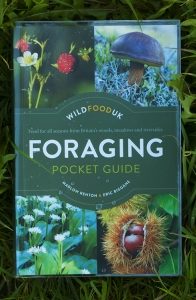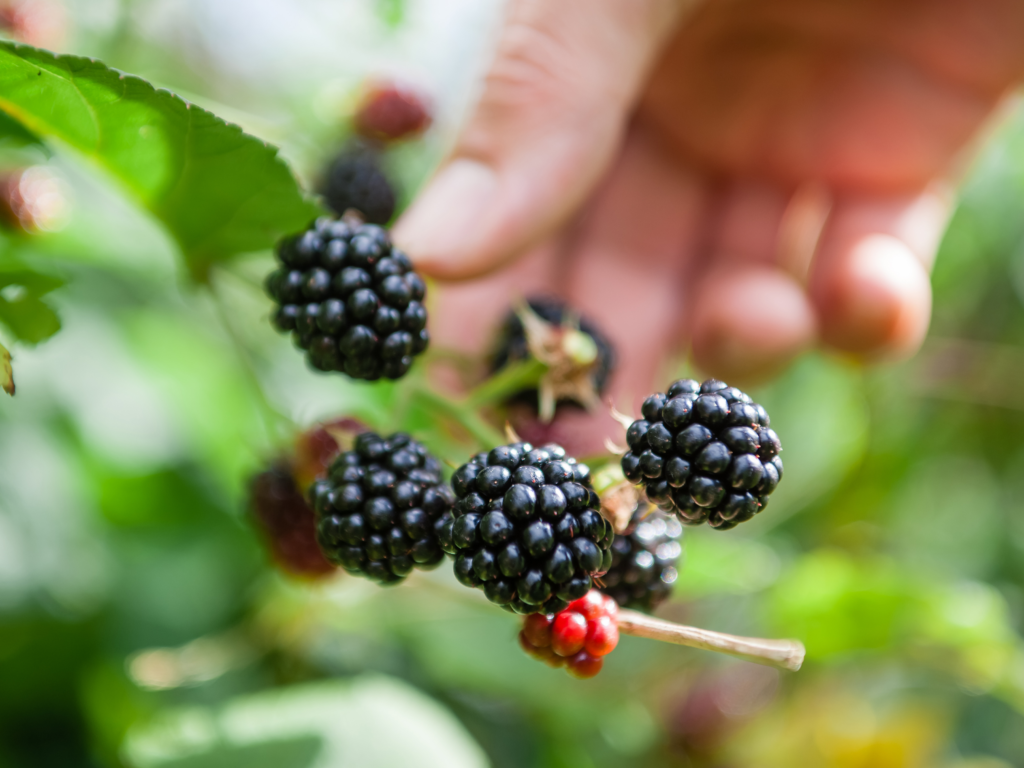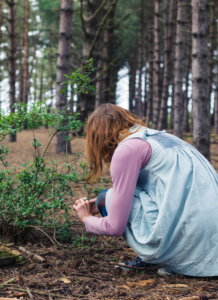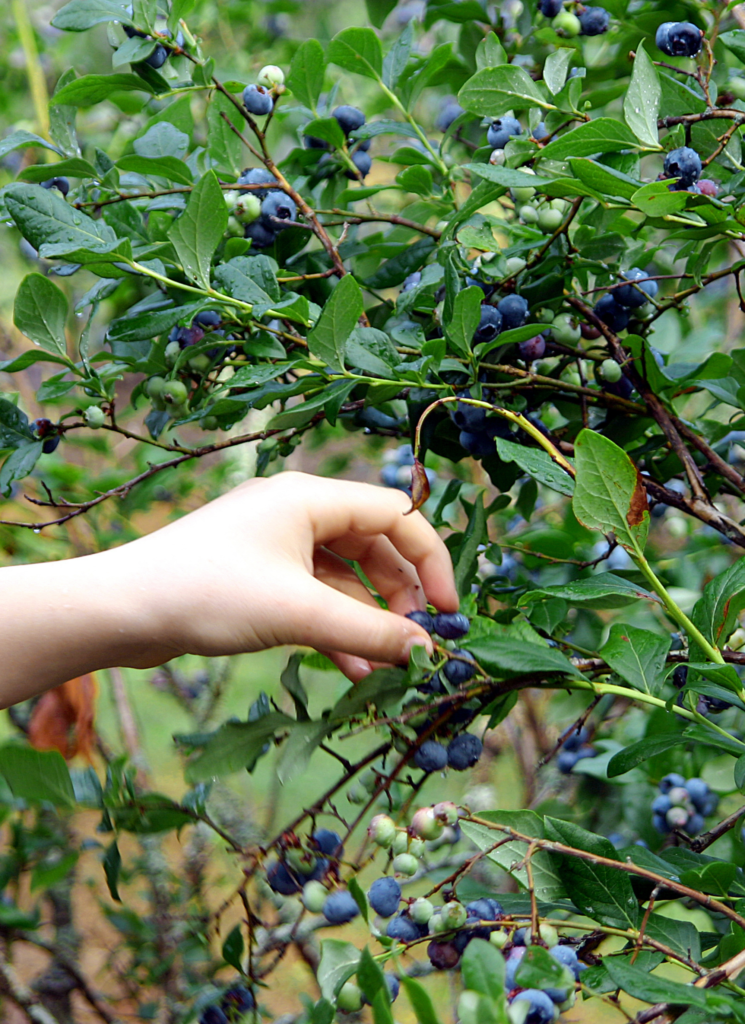Foraging is a fun hobby that I have had the good fortune and delight in taking part in since childhood. As I was lucky enough to grow up around my knowledgeable and plant loving grandparents, I learned important skills that have allowed me to continue my foraging journey safely and with the environment in mind.
Here I want to share what I’ve learned in the hope of taking away some of the overwhelm for a first-time forager. I’ll go over what you need to get started, some tips on how to collect plants and where, as well as foraging etiquette and of course safety.
So, if you are looking to get started on your foraging journey, then read on.
This post may contain affiliate links. Find out more in our Disclosure
Tools of the foraging trade
- The number one tool that all foragers should invest in is a good pocket-sized field guide. Make sure it’s specific to your country or region and choose one that has clear photographs and descriptions of each plant.
I really like the Wild Food UK Foraging Pocket Guide as is has clearly mapped out photos of different parts of each plant as well as good descriptions and some recipe ideas.

- You’ll need a basket, tub or cotton bag for transporting your delicious finds home.
- Having a pair of scissors or secateurs (not a knife, for safety reasons) will help reduce damage to plants and trees when you are collecting items.
- And lastly, think about your clothing before heading out. Long sleeves and trousers will help protect against brambles and nettle stings and a good pair of gardening gloves and sturdy footwear can help too.
Plant identification
As I’m sure you’re aware, there are many poisonous and harmful plants out there that can result in serious illness and even death. It is therefore essential that you identify plants correctly before foraging and never eat anything you can’t easily identify.
My number one rule when it comes to foraging is to always do your research and know your plants. Never take or eat anything that you are not 100% certain of – it’s dangerous and not worth the risk.
The main questions that foragers research when looking for a new plant are:
- Where do they grow?
- What time of year do they grow?
- Identifiable characteristics
- What parts of the plant can be gathered and eaten safely?
- And are there any lookalike plants that may be dangerous?
Taking a field guide with you will help you on your foraging way but going with a knowledgeable friend or as part of an organised foraging group is even better.
The main thing is don’t be scared to start! Even as a complete beginner you can have fun foraging. Just pick something that is easy to identify, like Blackberries, and have a go at making your own jam. It’s surprisingly satisfying and rewarding too!

Be a conscious consumer
Although foraging can be practiced by anyone, it should be noted that there is a foraging etiquette that should always be followed. This not only keeps you safe but also the environment and others around you, so make sure to read, understand and follow the points I’ve set out below.
Put nature first
We humans are just one part of the entire earths eco-systems and food chains. Remember this when foraging and always tread lightly wherever you go.
- Research the plants that you would like to forage for. Make sure that they are not rare or endangered and only forage from areas where you know they grow in abundance.
- Leave surrounding plants as you find them. If you can’t access what you are foraging for easily, leave it. Cutting back other plants to make way for yourself is not acceptable. Many other animals and insects rely on the habitat as it is, so leave it be.
- Don’t strip plants or areas of all their offerings. Gather a few nuts or leaves, fruit or flowers from each plant. We are not the only ones to benefit from them.
- Use scissors or secateurs to harvest from plants as this will cause less damage than breaking or tearing.

Where to forage
A bit of common sense will go a long way here, but things to be cautious of are contaminates, pollution and pesticides.
Road pollution will affect plants grown at the side of the road and areas next to farmland may have been sprayed with pesticides so avoid collecting anything from these areas. Also, take into consideration if your chosen area is a popular dog walking site and never pick or collect wild foods that might have been contaminated by dogs or other animals.
Be mindful of the area you would like to forage in. If it’s on private land, then you MUST get permission from the landowner first.
And remember, it’s illegal to dig up plants when they are not in your own garden. You can forage parts from them, but the plant must remain where you found it.
Research wild food recipes
Wild foods are not for everyone. They have strong and sometimes unusual flavours that some can find overpowering.
If you are trying wild foods for the first time, my advice to you is to always research recipes first before setting out to forage. Not only will research help you to identify the plants correctly, but it will also give you an idea of the amount of produce you need for what you intend to make.
I can’t tell you how frustrated it makes me when I hear of foragers going out and collecting foods in excessive abundance just because they were there. It’s unnecessary, wasteful and not good practice at all.
To help you avoid this, start out small. If you are new to the wild food or recipe you are making, then start by reducing the quantities stated in the recipe you have chosen by at least half. That way you won’t end up with lots of waste if it ends up being something that doesn’t suit your pallet.
My favourite Spring wild food recipe has to be Wild Garlic Pesto. You can can find my recipe for this as well as identification tips here.
Safety with foraged foods
Foraging is not just hazardous if you pick the wrong plant. As with many medications, some plants and herbs should not be used or consumed by people in pregnancy, with certain medical conditions or by children or babies. So always speak to your GP first before foraging if you have any doubts.
Wild food allergies
A word of caution. Even if you are lucky enough not to have any food allergies in your normal day to day life, please remember that this may not be the case when it comes to wild foods.
Trying wild foods or foods that you have never incorporated in your diet before should always be taken with caution. Always test new foods by taking small amount to start with in case allergies do arise.
Above all, you must take responsibility for your own safety if you choose to go foraging. Be aware of the dangers and don’t take risks. If you can’t identify it, don’t eat it.
So, there you have it, my field guide for first time foragers. Sticking to these guidelines and practicing caution when out foraging will make for a pleasant, fun and rewarding experience. If you do forage for foods or if you have any favourite wild food recipes, then please let me know in the comments below as I’d love to hear from you.
As always stay safe and happy foraging!
Dee


Pingback: Foraging For Wild Garlic & Making Pesto